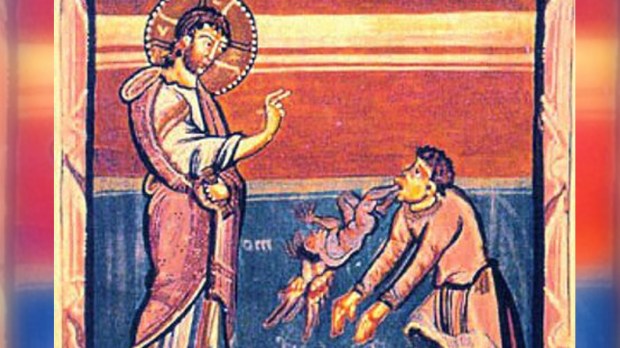Lenten Campaign 2025
This content is free of charge, as are all our articles.
Support us with a donation that is tax-deductible and enable us to continue to reach millions of readers.
The Gospel of Mark recalls the arrival of Jesus to the northeastern region of the Sea of Galilee, the Kineret:
They reached the territory of the Gerasenes on the other side of the lake, and when he disembarked, a man with an unclean spirit at once came out from the tombs towards him. The man lived in the tombs and no one could secure him any more, even with a chain, because he had often been secured with fetters and chains but had snapped the chains and broke the fetters, and no one had the strength to control him. All night and all day, among the tombs and in the mountains, he would howl and gash himself with stones. Catching sight of Jesus from a distance, he ran up and fell at his feet and shouted at the top of his voice, “What do you want with me, Jesus, son of the Most High God? In God’s name do not torture me!” For Jesus had been saying to him, “Come out of the man, unclean spirit.” Then he asked, “What is your name?” He answered, “My name is Legion, for there are many of us.” And he begged him earnestly not to send them out of the district. Now on the mountainside there was a great herd of pigs feeding, and the unclean spirits begged him, “Send us to the pigs, let us go into them.” So he gave them leave. With that, the unclean spirits came out and went into the pigs, and the herd of about two thousand pigs charged down the cliff into the lake, and there they were drowned.
Recently, a group of archaeologists discovered a marble slab in the shores of the Kineret, with an inscription in Hebrew that might indicate the exact location of this event, known as the “miracle of the swine.” According to the team, it might have occurred in Kursi, a town located in the land of the Gadarenes (or Gerasenes), in the southern part of the Golan Heights.
“The presence of a Hebrew settlement near the eastern shore of the Sea of Galilee is a very strange phenomenon,” exhlaind Haim Cohen, a researcher at Haifa University. In fact, the settlement was only discovered because of a drop in water levels that allowed researchers to find a pier normally under water and, next to it, the Kursi settlement. The the 1,500-year-old slab was found inside a building that would have functioned as a synagogue.
The marble slab would shed light on the issue. Being 1.40 meters by 70 centimeters, on its surface there is a Hebrew inscription in which the experts were able to identify the words “amen” and “marmaria,” which might translate either “Mary,” “marble” or “rabbi.” As read in Primeros Cristianos and Israel En Línea, according to Professor Mijal Artzi, the full text “is composed of eight lines; usually not so many words in Hebrew letters are carved in stone. The assumption is that the person to whom the inscription was dedicated had an enormous influence on the local population.”

